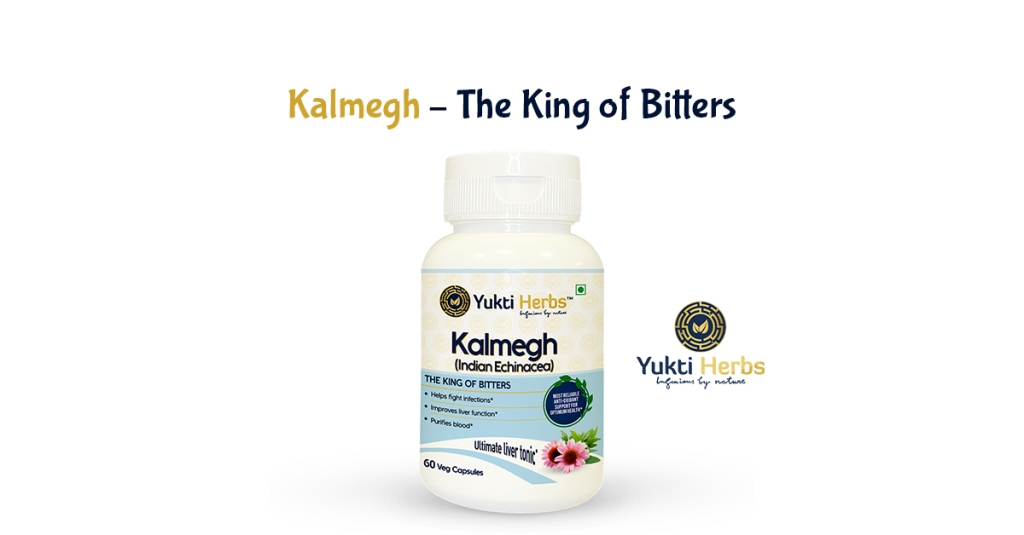Kalmegh, scientifically known as Andrographis paniculata, is a powerful herb that has been used for centuries in traditional medicine, particularly in Ayurveda and Traditional Chinese Medicine. Native to India and other Southeast Asian countries, this bitter-tasting plant is highly valued for its medicinal properties. Kalmegh is packed with bioactive compounds that contribute to its numerous health benefits. In this article, we will explore the various uses and benefits of Kalmegh, supported by scientific research and traditional knowledge.
- Immune Support: Kalmegh is renowned for its immune-boosting properties. It contains potent compounds like andrographolide, which has been shown to stimulate the immune system, promoting the production of antibodies and enhancing the body’s natural defense mechanisms. Studies have indicated that Kalmegh may help reduce the severity and duration of common colds, flu, and other respiratory infections.
- Anti-Inflammatory Effects: The anti-inflammatory properties of Kalmegh make it an excellent herb for managing various inflammatory conditions. Research suggests that the active compounds in Kalmegh inhibit the production of pro-inflammatory molecules, helping to alleviate symptoms associated with inflammation, such as pain and swelling. This makes Kalmegh a potential natural remedy for conditions like arthritis, asthma, and inflammatory bowel diseases.
- Liver Health: Kalmegh has long been used to support liver health and promote detoxification. It aids in protecting the liver against damage caused by toxins, alcohol, and certain medications. Research studies have shown that Kalmegh exhibits hepatoprotective properties, helping to regenerate liver cells, enhance liver function, and improve overall liver health. This makes it a valuable herb for individuals with liver disorders or those looking to support their liver’s natural detoxification processes.
- Digestive Health: Traditionally, Kalmegh has been used to address various digestive issues, including indigestion, bloating, and diarrhea. Its bitter compounds stimulate the secretion of digestive enzymes, aiding in proper digestion and absorption of nutrients. Kalmegh has also demonstrated antimicrobial activity against harmful gut bacteria, potentially contributing to a healthy gut microbiome.
- Anti-Microbial Properties: Kalmegh possesses significant antimicrobial properties, which make it effective against a range of microbial infections. Studies have shown its efficacy against bacteria, viruses, and fungi, including those that are resistant to conventional antibiotics. Kalmegh extracts and compounds have exhibited potent antimicrobial activity against pathogens such as Staphylococcus aureus, Escherichia coli, and Candida species.
- Antioxidant Activity: The presence of antioxidants in Kalmegh helps combat oxidative stress, a process linked to the development of various chronic diseases. Research has highlighted the ability of Kalmegh to scavenge harmful free radicals and reduce oxidative damage in the body. This antioxidant potential contributes to its protective effects against conditions like cardiovascular disease, neurodegenerative disorders, and certain types of cancer.
It is important to note that while Kalmegh shows promising potential in various health areas, further research is needed to fully understand its mechanisms and confirm its effectiveness in specific conditions.
Conclusion: Kalmegh, or Andrographis paniculata, is a remarkable herb that offers a wide array of health benefits. From immune support and anti-inflammatory effects to liver protection and digestive health, Kalmegh has been utilized for centuries in traditional medicine. Its antimicrobial properties and antioxidant activity further contribute to its potential in addressing various health concerns. While more research is needed to fully understand and validate its effectiveness, Kalmegh continues to be a valuable herb in supporting overall well-being. As always, it is important to consult with a healthcare professional before using Kalmegh or any herbal remedy for specific health conditions or concerns.
References:
- Akbar, S. (2011). Andrographis paniculata: A Review of Pharmacological Activities and Clinical Effects. Alternative Medicine Review, 16(1), 66-77.
- Jayakumar, T., et al. (2012). Andrographolide, a Natural Antioxidant: An Update. Reviews on Environmental Health, 27(1), 35-45.
- Hossain, M. S., et al. (2014). Antimicrobial, Cytotoxic and Antioxidant Activity of Andrographis paniculata. Journal of Applied Pharmaceutical Science, 4(3), 072-075.
- Mishra, S., & Aeri, V. (2011). Evaluation of Antibacterial Potential of Andrographis paniculata Extract and Andrographolide against Gram-Positive, Gram-Negative, and Acid-Fast Bacteria. Journal of Pharmacy and Bioallied Sciences, 3(2), 246-248.
- Pradhan, R., et al. (2019). Andrographis paniculata (Burm. f.) Wall. ex Nees: A Review of Ethnobotany, Phytochemistry, and Pharmacology. Phytotherapy Research, 33(5), 1292-1310.
